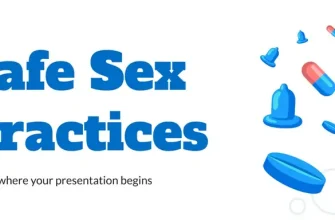Embarking on a sexual journey can feel like a complex experience filled with questions, uncertainties, and excitement. Whether you’re preparing for your first sexual encounter or simply seeking to understand more about intimacy, this comprehensive guide will help you navigate through it with confidence. Here, we will cover essential topics, including understanding consent, exploring sexual anatomy, learning about safe sex practices, and recognizing the emotional and psychological aspects of sexual relationships. This guide is intended to offer detailed, factual information backed by credible sources to ensure that you have the tools necessary for a positive and healthy sexual experience.
Understanding Consent: The Foundation of Healthy Sexuality

Consent is the cornerstone of any sexual interaction. It’s essential to understand that consent must be given freely, willingly, and enthusiastically by all parties involved. Without consent, any sexual activity can be considered assault, which is not only illegal but also harmful emotionally and psychologically. Consent is not just about saying “yes”—it’s about continuous, active communication between partners, ensuring that both individuals are comfortable and engaged.
In modern society, the definition of consent has evolved to stress its importance in all forms of sexual activity. According to research, a significant number of sexual assaults occur when consent is not fully communicated or respected. In fact, studies show that 1 in 5 women and 1 in 71 men experience sexual assault in their lifetime, which underscores the necessity of understanding and practicing consent (National Sexual Violence Resource Center, 2015).
Consent is not just a one-time agreement—it should be an ongoing conversation. It’s essential to keep checking in with your partner and be aware of their comfort level throughout any sexual encounter. If at any moment your partner seems unsure or uncomfortable, it’s crucial to stop and reassess the situation. Furthermore, consent can be withdrawn at any time. This means that even during sex, a partner can say “no” or show signs of discomfort, and it’s your responsibility to immediately stop.
Understanding the nuances of consent is an ongoing learning process. Active communication, mutual respect, and a shared understanding of boundaries are vital for creating a safe sexual experience for everyone involved. Remember, no one should feel pressured into sex or sexual acts they don’t want.
Anatomy and Physiology: Knowing Your Body and Your Partner’s Body

Understanding both your own body and your partner’s body is key to having a satisfying and safe sexual experience. While everyone’s sexual preferences and desires are unique, having a basic understanding of anatomy can enhance your physical pleasure and ensure that you engage in activities that are both enjoyable and safe.
The male sexual anatomy includes the penis, testicles, prostate gland, and seminal vesicles. The penis is the organ responsible for sexual pleasure and reproduction. During sexual arousal, it becomes erect, allowing for penetration during intercourse. The testicles produce sperm, which are released during ejaculation, and the prostate gland plays a role in the production of semen.
The female anatomy is somewhat more complex and includes the vagina, clitoris, ovaries, fallopian tubes, and uterus. The clitoris is often the most sensitive part of the female body, playing a significant role in sexual pleasure. The vagina, which is an elastic canal, serves as the passage for menstrual flow, childbirth, and sexual penetration. The ovaries release eggs, while the uterus is the organ where a fertilized egg develops during pregnancy.
A basic understanding of these structures can help you and your partner communicate effectively about what feels good, which areas are more sensitive, and what sexual activities you both enjoy. Moreover, being knowledgeable about the anatomy of both sexes can also help you understand how certain sexual acts, such as penetration, may feel for your partner, whether male or female.
Sexual arousal in both men and women follows a similar physiological process, with increased blood flow to the genital area, elevated heart rate, and heightened sensitivity in erogenous zones. The human sexual response cycle, as described by Masters and Johnson in their pioneering work on sexual health, consists of four stages: excitement, plateau, orgasm, and resolution (Masters & Johnson, 1966). These stages reflect the physiological and psychological changes that occur during sexual activity, from the initial signs of arousal to the release of sexual tension during orgasm and the calm period following.
Safe Sex Practices: Protecting Your Health

One of the most important aspects of engaging in sexual activity, particularly for beginners, is understanding the importance of safe sex. This not only protects you from sexually transmitted infections (STIs) but also prevents unplanned pregnancies. Practicing safe sex includes the use of contraceptives, such as condoms, birth control pills, and other methods, as well as understanding how these methods work.
Condoms are one of the most effective ways to protect both partners from STIs, including HIV. They act as a physical barrier to prevent the exchange of bodily fluids during sexual activity. Studies show that consistent and correct use of condoms can reduce the risk of most STIs by up to 90% (Centers for Disease Control and Prevention, 2020).
For individuals who are not using condoms, there are other forms of contraception, such as birth control pills, intrauterine devices (IUDs), and hormonal injections. However, while these methods are effective in preventing pregnancy, they do not protect against STIs, which is why combining contraception with condoms is often recommended.
It’s also important to get regular sexual health check-ups, especially if you have multiple partners or are engaging in unprotected sex. Many STIs can be asymptomatic, meaning that a person can carry an infection without showing any symptoms. Regular testing ensures that you are aware of your sexual health status and can take appropriate actions if needed.
Emotional and Psychological Aspects of Sex: Managing Expectations and Communication

Sex is not just a physical act—it involves a significant emotional and psychological component. For beginners, it’s important to manage expectations and communicate openly with your partner about desires, fears, and boundaries. Being emotionally prepared for sex can help mitigate any anxiety or confusion that might arise during the encounter.
For many, the first sexual experience is often surrounded by societal pressure, curiosity, and sometimes even fear. It’s normal to have a range of emotions before and after your first time. Keep in mind that emotional connection and trust with your partner are just as important as the physical aspects of sex. Feeling safe and respected during sex can reduce feelings of anxiety and make the experience more fulfilling for both individuals.
It’s also essential to discuss contraception and other important matters with your partner before engaging in sex. Both parties should feel comfortable talking about protection, consent, and expectations. When both individuals are on the same page, it can significantly reduce misunderstandings and enhance the overall experience.
Furthermore, emotional well-being post-sex is crucial. After an encounter, both individuals should check in with each other, especially if the experience was emotionally significant. Maintaining open communication can help foster a deeper emotional connection and address any concerns or issues that may arise.
Enjoying Healthy, Safe, and Fulfilling Sexual Experiences

Sex is a deeply personal experience that varies for everyone. Whether you’re a beginner or have more experience, the key to a healthy and fulfilling sexual life is communication, understanding, and respect. By learning about consent, understanding the body, practicing safe sex, and managing emotions, you’re equipping yourself with the tools needed for positive sexual experiences.
Sex is not just about physical pleasure—it’s about emotional connection, mutual respect, and a shared experience. By focusing on consent, communicating openly with your partner, and being informed about safe practices, you can enjoy sex that is not only pleasurable but also healthy and fulfilling.
References:
- National Sexual Violence Resource Center (2015). Statistics. Retrieved from https://www.nsvrc.org/statistics
- Masters, W., & Johnson, V. (1966). Human Sexual Response. Boston: Little, Brown, and Company.
- Centers for Disease Control and Prevention (2020). Condom Effectiveness. Retrieved from https://www.cdc.gov/condomeffectiveness/
- National Institutes of Health (2012). Human Sexuality: The Basics. Retrieved from https://www.ncbi.nlm.nih.gov/pmc/articles/PMC3134633/

Gerald Werner
Sex Education Editor
An experienced editor with a background in journalism and a master’s degree in education, they lead the Sex Education section at EroticThreads. With over 15 years of experience in writing and editorial management, they have contributed to expanding the platform’s reach and impact by creating evidence-based, inclusive, and engaging content on sexual wellness, relationships, and personal empowerment. Their work has been featured in several international forums and publications advocating for modernized sexual education. Outside of their professional role, they enjoy exploring the outdoors, experimenting with vegan cuisine, and curating a personal library of rare and first-edition books.








